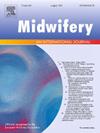改善撒哈拉以南非洲熟练助产服务的干预措施。我们做了什么,什么起了作用?叙事综合
IF 2.6
3区 医学
Q1 NURSING
引用次数: 0
摘要
撒哈拉以南非洲只有64%的分娩由熟练专业人员助产,孕产妇死亡率为每10万活产536人,因此需要有针对性的干预措施,以提高熟练助产人员的利用率,降低孕产妇死亡率。目的确定在撒哈拉以南非洲实施的干预措施,以提高熟练助产士的吸收,并确定影响干预措施实施、有效性和可持续性的背景因素。方法遵循叙事综合的基本原则进行综述。研究人员于2023年3月对5个电子数据库进行了搜索,并于2024年9月进行了更新,以确定相关的定性、定量和混合方法的初步研究,这些研究报告了撒哈拉以南非洲为改善熟练助产士的服务而采取的任何干预措施。在4376篇电子检索文章中,来自12个国家的34篇同行评议研究符合最终选择标准,已被纳入本综述。确定的干预措施分为免费/补贴孕产妇保健、流动保健、待产之家、社区干预、产前教育和综合一揽子措施。大多数干预措施有效地促进了熟练助产士的利用。影响干预成功的关键因素包括男性参与、社区领导、孕产妇识字率、社会经济地位、设施距离、当地政府支持和技术资源,其中社会经济地位较低的社区受益最大。结论:本综述的研究结果支持干预措施在不同背景下效果不同的理论;因此,至关重要的是要了解人口的需求,确定可用资源并提供量身定制的干预措施。本文章由计算机程序翻译,如有差异,请以英文原文为准。
Interventions to improve skilled birth attendance in sub-Saharan Africa. What has been done, and what has worked? A narrative synthesis
Background
With only 64 % of births attended by skilled professionals and a maternal mortality ratio of 536 per 100,000 live births, Sub-Saharan Africa needs targeted interventions to improve skilled birth attendants’ utilisation and reduce maternal mortality.
Aim
To identify the interventions implemented across Sub-Saharan Africa to improve skilled birth attendants’ uptake and identify the contextual factors influencing the interventions' implementation, effectiveness, and sustainability.
Methods
The review followed the fundamentals of narrative synthesis. A search was conducted in March 2023 and updated in September 2024 on five electronic databases to identify relevant primary qualitative, quantitative and mixed-method studies that have reported any intervention in Sub-Saharan Africa to improve skilled birth attendants patronage.
Finding
Of the 4376 electronically retrieved articles, 34 peer-reviewed studies from 12 countries met the final selection criteria and have been included in this review. Interventions identified were grouped into Free/Subsidised Maternal Health Care, Mobile Health, Maternity Waiting Homes, Community-Based Interventions, Prenatal Education and Integrated Packages. Most of the interventions effectively promoted the utilisation of skilled birth attendants. Key factors influencing intervention success included men’s involvement, community leadership, maternal literacy, socioeconomic status, distance to facilities, local government support, and technological resources, with lower socioeconomic communities benefiting most.
Conclusion
The findings from this review support the theory that interventions work differently in different contexts; hence, it is vital to understand the population's needs, identify the available resources and deliver custom-made interventions.
求助全文
通过发布文献求助,成功后即可免费获取论文全文。
去求助
来源期刊

Midwifery
医学-护理
CiteScore
4.50
自引率
7.40%
发文量
221
审稿时长
13.4 weeks
期刊介绍:
Midwifery publishes the latest peer reviewed international research to inform the safety, quality, outcomes and experiences of pregnancy, birth and maternity care for childbearing women, their babies and families. The journal’s publications support midwives and maternity care providers to explore and develop their knowledge, skills and attitudes informed by best available evidence.
Midwifery provides an international, interdisciplinary forum for the publication, dissemination and discussion of advances in evidence, controversies and current research, and promotes continuing education through publication of systematic and other scholarly reviews and updates. Midwifery articles cover the cultural, clinical, psycho-social, sociological, epidemiological, education, managerial, workforce, organizational and technological areas of practice in preconception, maternal and infant care.
The journal welcomes the highest quality scholarly research that employs rigorous methodology. Midwifery is a leading international journal in midwifery and maternal health with a current impact factor of 1.861 (© Thomson Reuters Journal Citation Reports 2016) and employs a double-blind peer review process.
 求助内容:
求助内容: 应助结果提醒方式:
应助结果提醒方式:


